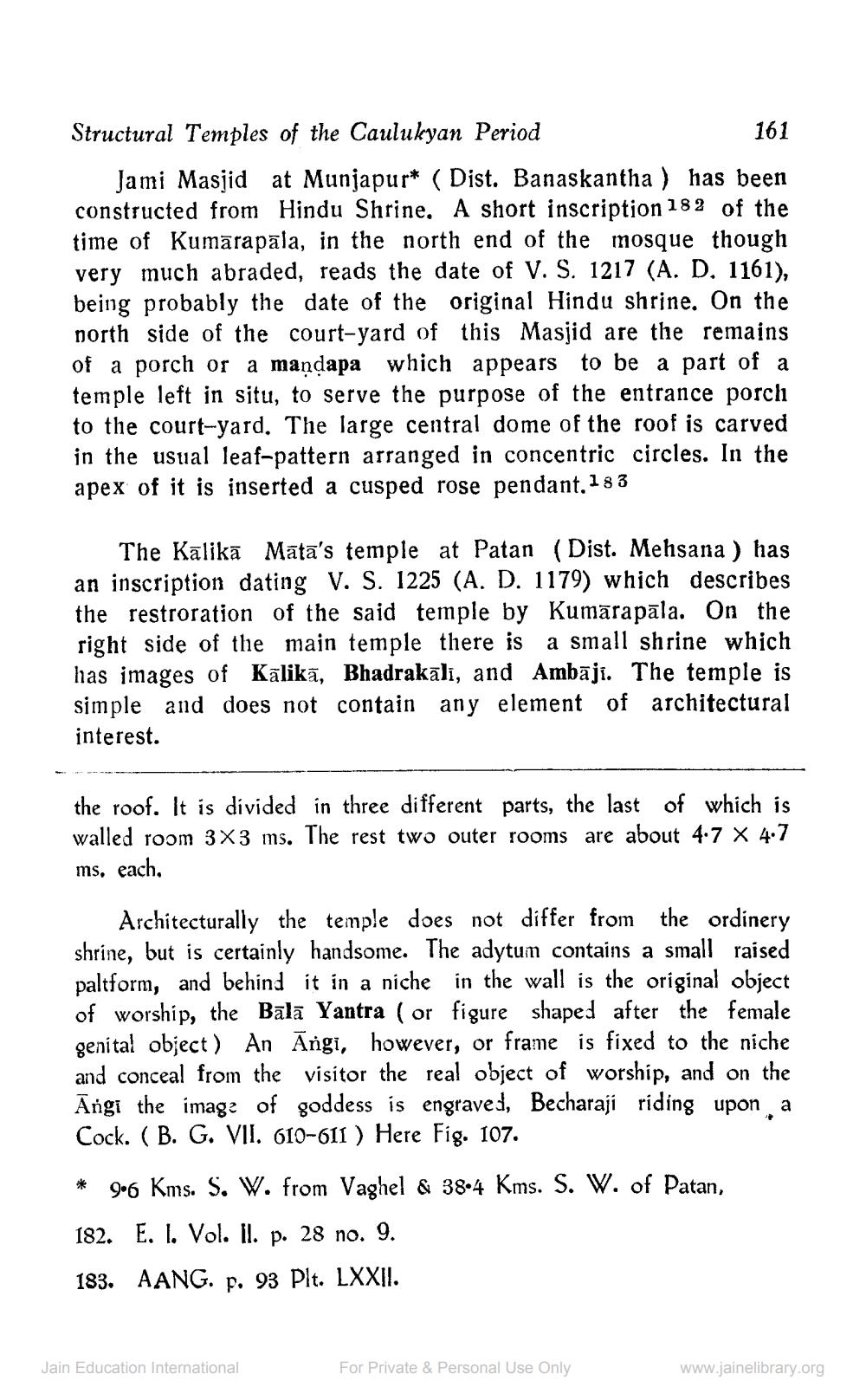________________
Structural Temples of the Caulukyan Period
161 Jami Masjid at Munjapur* ( Dist. Banaskantha ) has been constructed from Hindu Shrine, A short inscription 182 of the time of Kumārapāla, in the north end of the mosque though very much abraded, reads the date of V. S. 1217 (A. D. 1161), being probably the date of the original Hindu shrine. On the north side of the court-yard of this Masjid are the remains of a porch or a maņdapa which appears to be a part of a temple left in situ, to serve the purpose of the entrance porch to the court-yard. The large central dome of the roof is carved in the usual leaf-pattern arranged in concentric circles. In the apex of it is inserted a cusped rose pendant, 183
The Kālikā Mātā's temple at Patan (Dist. Mehsana) has an inscription dating V. S. 1225 (A. D. 1179) which describes the restroration of the said temple by Kumārapāla. On the right side of the main temple there is a small shrine which has images of Kālikā, Bhadrakāli, and Ambāji. The temple is simple and does not contain any element of architectural interest.
the roof. It is divided in three different parts, the last of which is walled room 3x3 ms. The rest two outer rooms are about 4:7 X 4.7 ms, each.
Architecturally the temple does not differ from the ordinery shrine, but is certainly handsome. The adytum contains a small raised paltform, and behind it in a niche in the wall is the original object of worship, the Bālā Yantra ( or figure shaped after the female genital object) An Argi, however, or frame is fixed to the niche and conceal from the visitor the real object of worship, and on the Angi the image of goddess is engraved, Becharaji riding upon a Cock. (B. G. VII. 610-611 ) Here Fig. 107.
* 9•6 Kms. S. W. from Vaghel & 38.4 Kms. S. W. of Patan, 182. E. I. Vol. II. p. 28 no. 9. 183. AANG. p. 93 Plt. LXXII.
Jain Education International
For Private & Personal Use Only
www.jainelibrary.org




